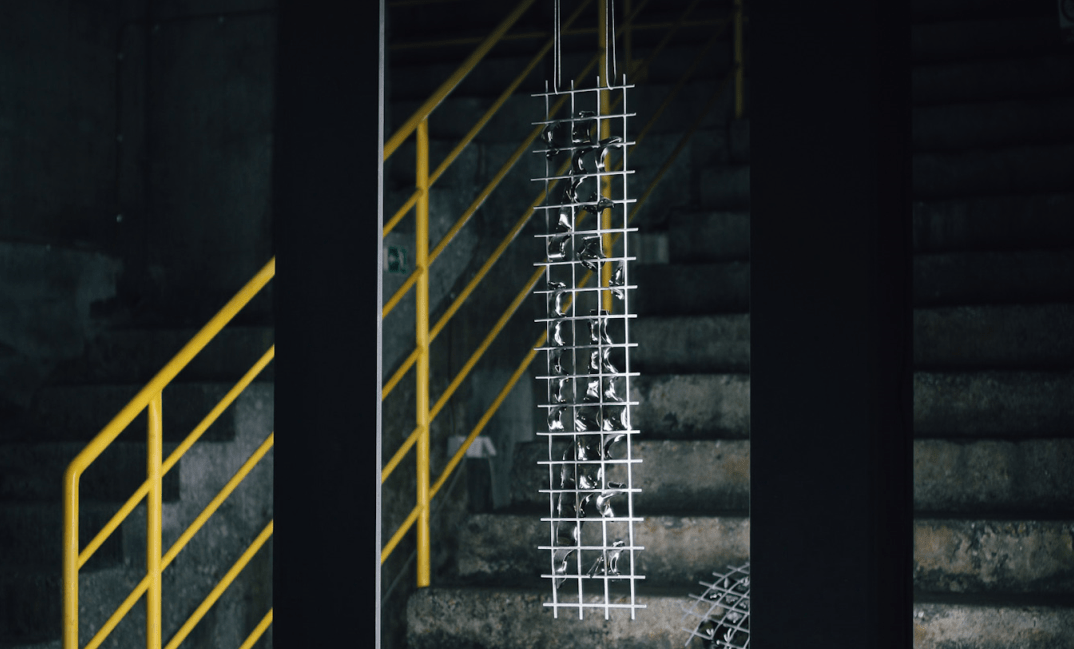The Glass Studio of the Faculty of Art and Design of Jan Evangelista Purkyně University in Ústí nad Labem presented an exhibition called Backstage Entrance at this year’s Meat Design Festival in Ostrava.
„The product or artwork is just the tip of the iceberg. This exhibition project will show you the background of the process of creating artworks and products produced by the upcoming wave of students from the Glass Studio in Ústí nad Labem. Their perspective on the material they love, study and shape brings ideas and variety with a unique signature and a temper that knows no boundaries.“ said Marcel Mochal – head of Glass studio, about the exhibiton.
LIST OF EXHIBITING STUDENTS:
JAN ČIHÁK DIRTYGLASS 2.0 (Glass studio)
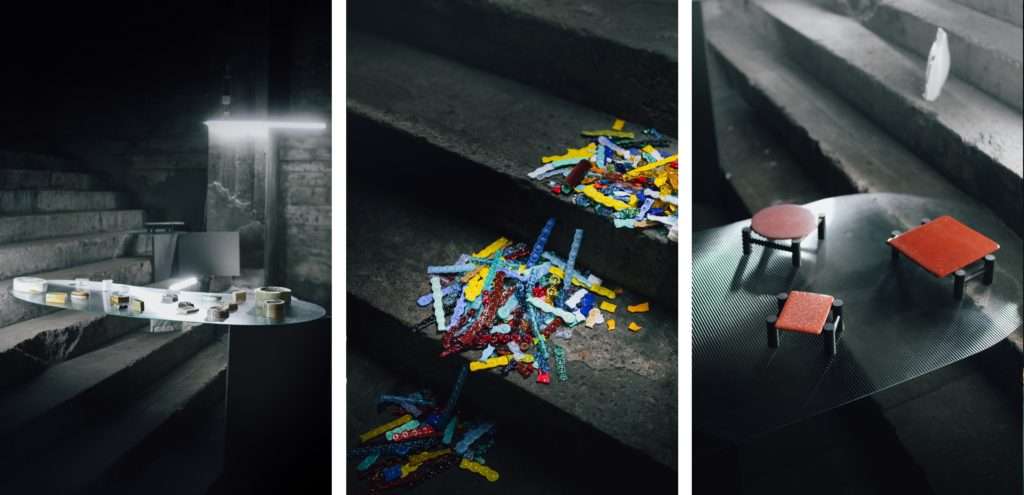
DIRTYGLASS 2.0 Is the next step in the processing of waste glass using the process of crushing. The author created two new panel types: one created from the waste from compactor components, creating a unique textured surface. The second type of panel utilizes a new technique of leaving imprints in the glass and is made from packaging glass.
This experiment transforms waste into an aesthetically pleasing material. The glass-melted panels, combined with a wooden, ebony-stained frame, together create an interior furniture accessory.
SÁRA DROBÍKOVÁ WHERE? (Glass studio)
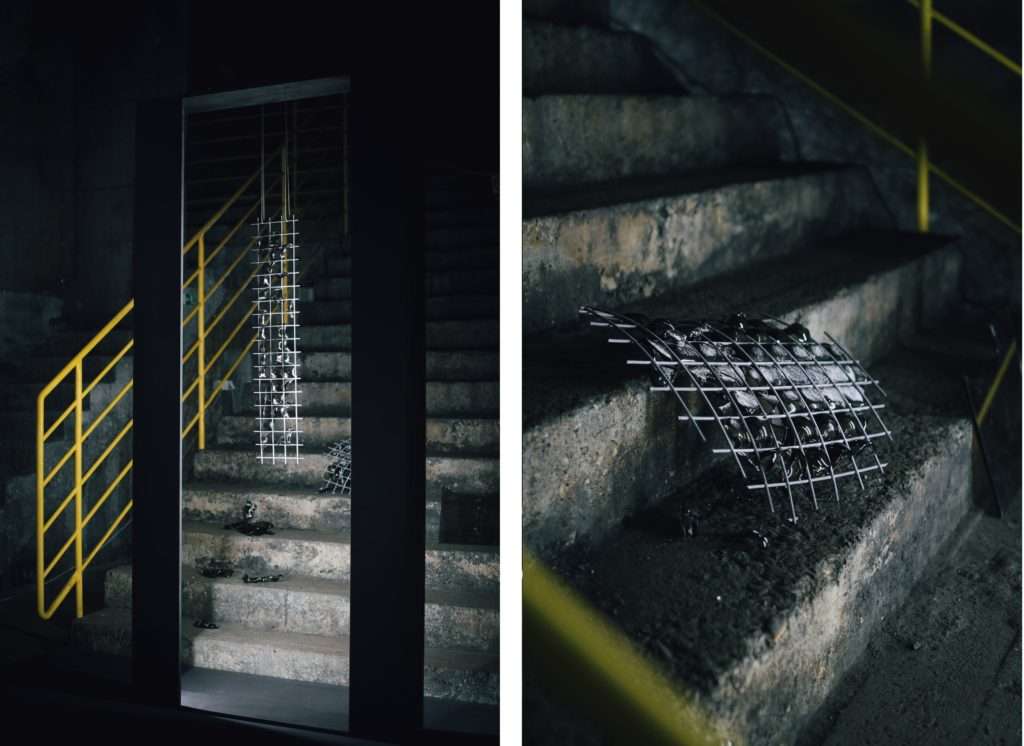
The experimental objects Where? explore the impact of gravity on the behavior of glass. They capture the moment when glass reaches its maximum flow and subsequently sags due to gravity. Flat glass was placed on metallic grids and heated to high temperatures, causing it to melt and change its state. As the temperature gradually decreased and the glass adapted to the presence of the metal grid, it naturally deformed.
The force of gravity also played a role in preparing the glass pieces.Instead of the traditional cutting method, glass sheets were shattered by simply letting them fall.
SÁRA DROBÍKOVÁ WELCOME (Glass studio)
Our university, UJEP, is located in Ústí nad Labem, a city which is ¼ made up of brownfields and unused, decaying parcels. The aim of the project called Vítejte (Welcome) is to explore and bring attention to the deteriorating areas in this city, to search for beauty and inspiration in locations where few people look for it, and to shed light on the potential of this urban wilderness in the north of the Czech Republic. The clean, untouched, exact chair is symbolically intended for a local chairman or person with the power to decide on the development and future of the city. The object is filled with rubble and residual material from excluded locations.
ELIŠKA BRZÁKOVÁ FLORAL PATTERN (Glass studio)
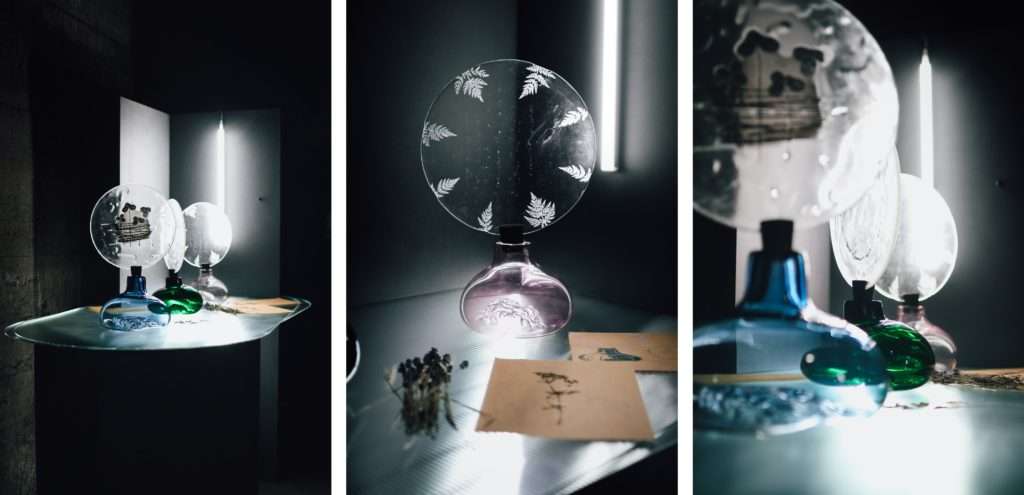
The Floral Pattern project investigates how humans can shape and interact with nature using glass, traditional crafts, and handmade techniques. The inspiration for the project comes from the folk tradition of intertwining natural materials into predetermined shapes using specific rules. The natural materials are inserted and then fused in glass. It is an attempt to control the naturally formed object and its unpredictable form in glass. However, this process cannot be completely controlled and the flora often will create its own unique representation.
VOJTĚCH HEPNAR THE REAL RULER OF THE KRKONOŠE MOUNTAINS (Glass studio)
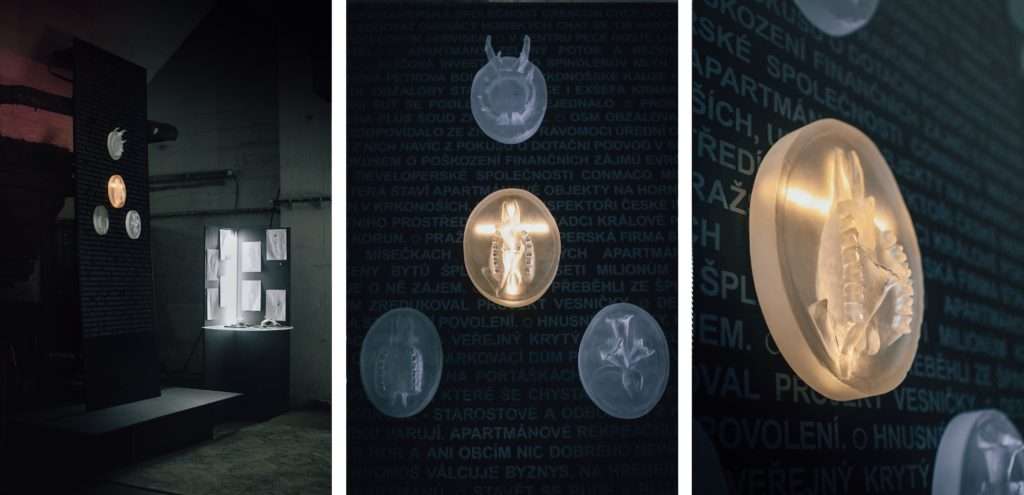
The Real Ruler of the Krkonoše Mountains is a glass quadriptych that highlights the complex relationship between human power, nature and environmental protection in relation to the territory of the Krkonoše Mountains. The glass sculpture has been made to symbolize a crucifix in a room to which people pray and ask for help. The administration of the Krkonoše National Park thus becomes a modern analogy of the cross, which locals ask for permission. However, KRNAP often refuses these requests. This suggests that the organisation is taking on the role of an uncompromising ruler. The artwork features an important symbol, an animal skull, likening it to the symbol of suffering Jesus. This skull symbolizes the suffering of nature due to human actions.
ANNA RAUFEROVÁ GOGO GRAAL (Glass studio)
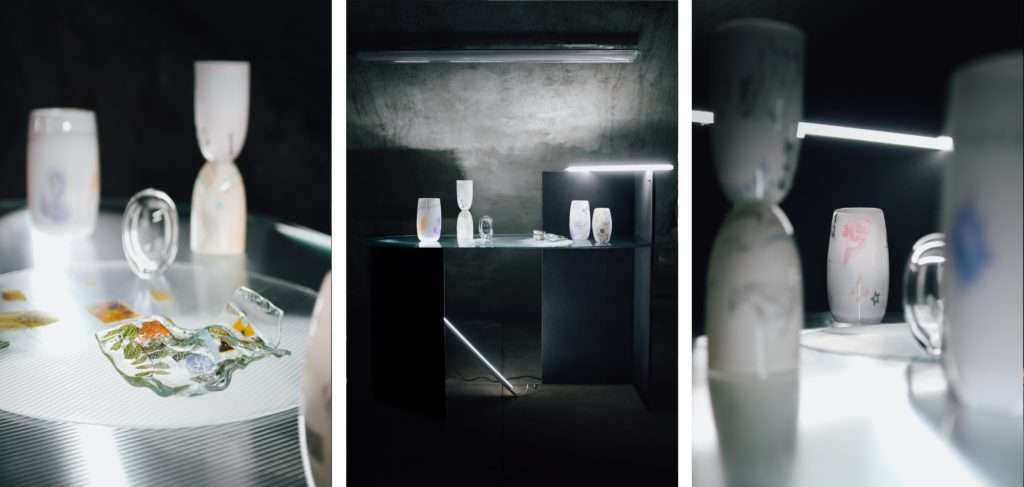
GoGo Graal objects were created to explore the limits of the Swedish metallurgical technique “graal”, which integrates the decor directly into the glass. The otherwise very demanding process was simplified, accelerated and adapted to suit the capabilities of a student and redesigned to fit an environment where traditional graal could not be created. The collected typographic and pictorial motifs create a three-dimensional collage, where the motifs seem to levitate within the layers of glass. The decor is thus randomly deformed and acquires its specific form.
LENKA HOLUBCOVÁ – ANNA STRNADOVÁ THE HIDDEN FACE (Glass studio)

The Hidden Face masks collection highlights anonymity in the glass industry. Each glass bead passes through the hands of many people whose identity remains hidden. They are people of different professions with different tasks, who are connected by the resulting product, exported to the whole world.
The yellow mask refers to the mining of a glass sand. A protective helmet is an element crucial for workers to carry out their work. The orange mask represent the melting of the glass and the heat generated in the smelters. It includes a protective shield, which is sometimes used by glassmakers at work. The visual appearance of objects is inspired by the quarry in Střelč, where glass sand is mined, without which glass and glass beads could not be created. The overall shape, eyes and expressions of the masks are based on its ground plan.
HANA VOPRAVILOVÁ PAP 20 (Glass studio)
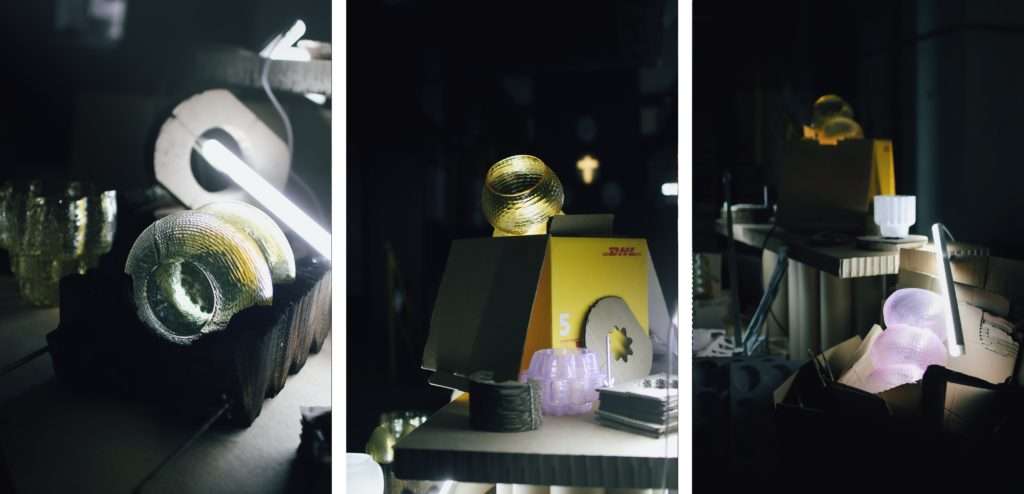
The PAP 20 collection of glass containers is the result of an exploration of the aesthetic potential of shapes, patterns and structures that are often overlooked. By integrating the details of paper packaging materials into glass, the collection attempts to freed paper from its banal and consumerist understanding. At the same time, it attempts to create a decor capable of reflecting contemporary society. By not specifying the purpose of the containers, the wavy cardboard structure is freed from its original function and turned into something purely aesthetic. The experiment thus raises the question: Can a structure not designed with aesthetic ambition become a full-fledged decor?
The paper moulds for the realisation of the collection were made from found waste, transport packaging and complemented by moulds made according to the author´s own design based on the construction of several types of corrugated cardboard.
HANA VOPRAVILOVÁ WATER WHERE ARE YOU GOING TO? HEAT WHERE ARE YOU GOING TO? (Glass studio)
Installation Water, where are you going to? raises questions such as: What is the least sustainable thing about the glass industry? Where does the water from the glass grinding shop go? And how can it be reused as efficiently as possible?
The objects on display are the result of reflecting on these questions and trying to find answers to the complicated issues of sustainability in glass production and processing. The collected wastewater in containers represent tailings ponds, raise the question of how to utilize the flowing water (1 liter every 2.5 minutes) during an eight-hour operation.
The project also includes a video projection Heat, where are you going to? where we also explore how to harness the energy released during glass melting and capture the heat escaping during glass production. The installation doesn’t offer a solution but highlights the unused potential of heat and energy sources in our surroundings.
CONTACT
Marcel Mochal | marcel.mochal@ujep.cz
www.fud.ujep.cz/ateliery/sklo
INSTAGRAM | FACEBOOK
Photo | Vojtěch Hepnar
